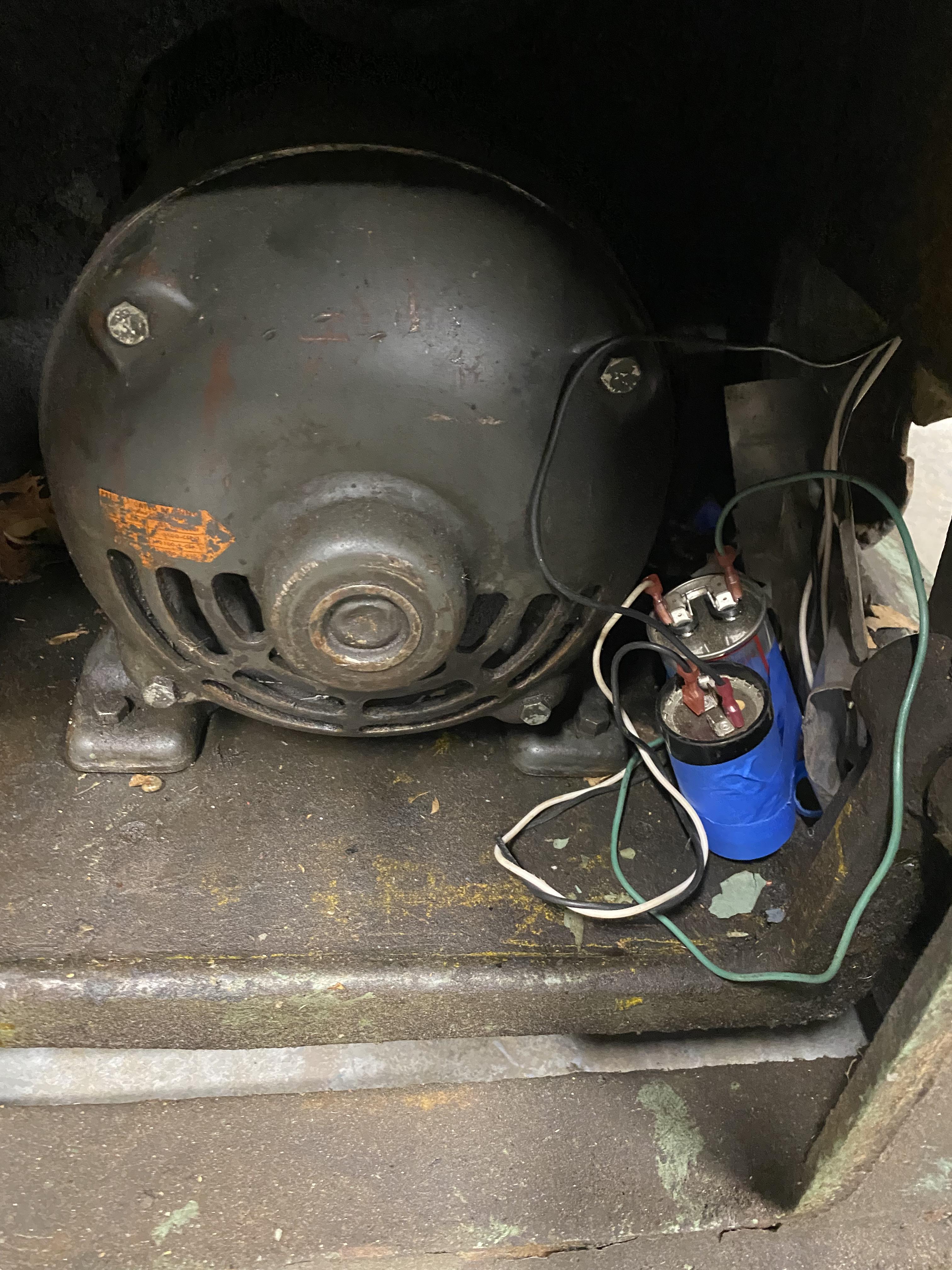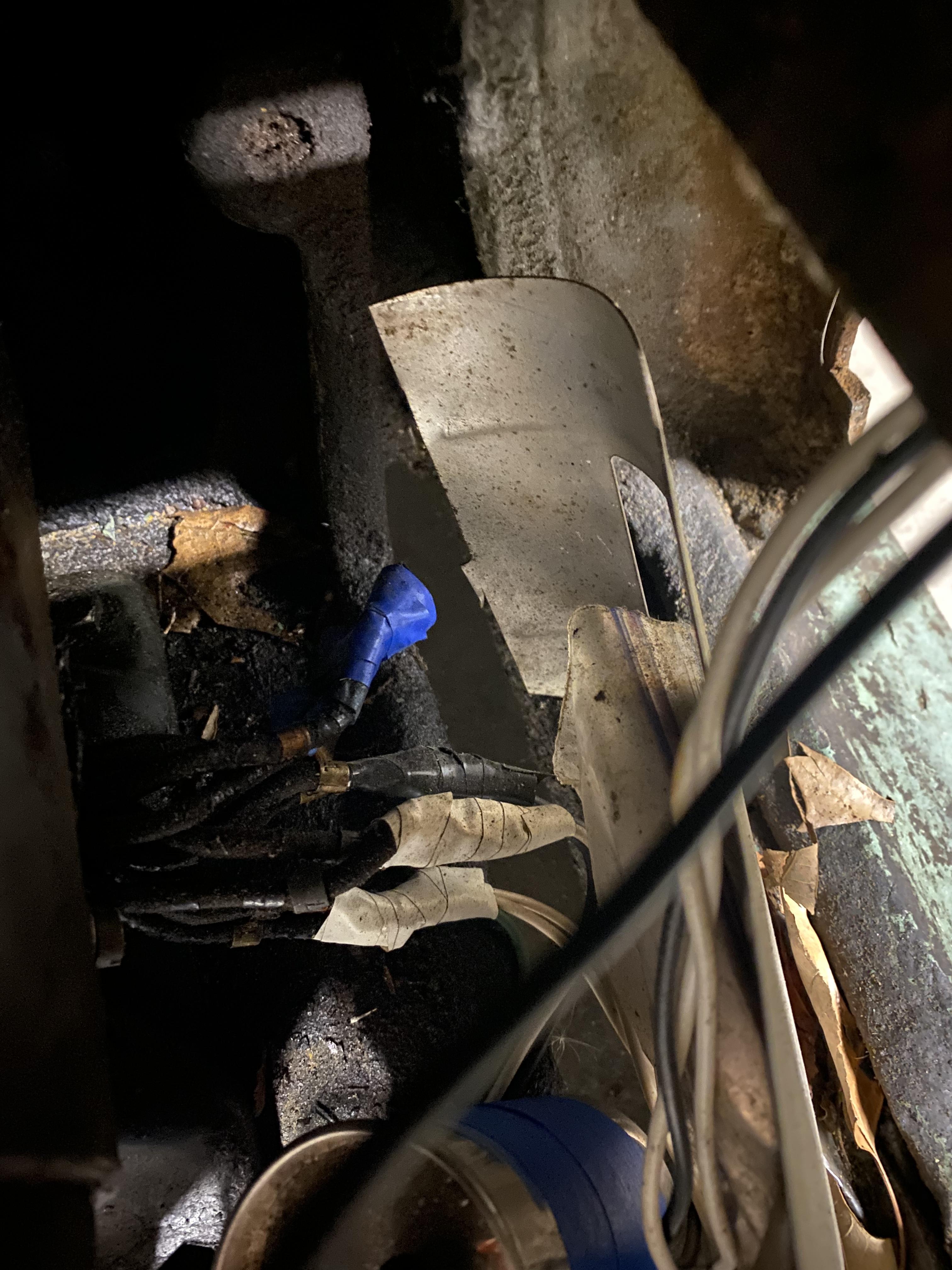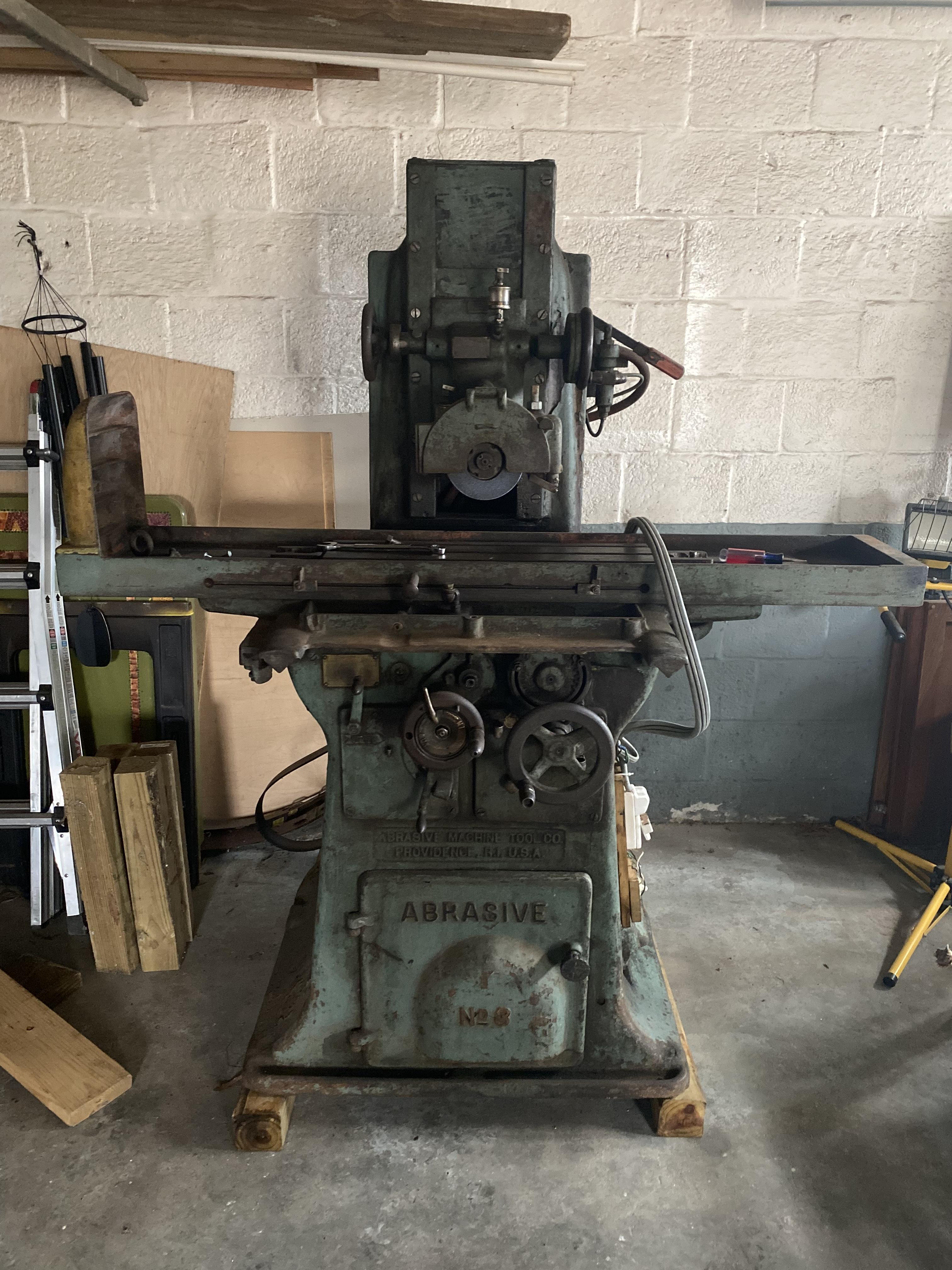- Joined
- Oct 21, 2021
- Messages
- 63
I landed a pretty good deal on an old Abrasive No 3 surface grinder, and managed to get it into the garage today. Unfortunately, the wiring is a hot mess... The guy I bought it from spoke with a heavy accent, but I believe he was saying this is a 3-phase motor, but he wired it with capacitors to run off single-phase. I did see that it runs when you plug it into 220 single-phase, though I'm not inclined to do it again until I get this better sorted.
The motor looks gorgeous, but the only sticker that remains on the thing is illegible. Is there anything I can do to determine the size? There's whispers of these No 3 grinders here and there on the internet, but I haven't seen a spec that lays out what sort of sizing and motor I should expect. It looks old, though if its original I'd have no way of knowing.
I do plan to get out there and stretch everything out and hopefully come up with some sort of idea of how its currently wired, but I wasn't in a position to do so tonight, so I just snapped a few pics and was hoping for an easy faceplate readout. So without further ado, here's some pics of the thing:




The motor looks gorgeous, but the only sticker that remains on the thing is illegible. Is there anything I can do to determine the size? There's whispers of these No 3 grinders here and there on the internet, but I haven't seen a spec that lays out what sort of sizing and motor I should expect. It looks old, though if its original I'd have no way of knowing.
I do plan to get out there and stretch everything out and hopefully come up with some sort of idea of how its currently wired, but I wasn't in a position to do so tonight, so I just snapped a few pics and was hoping for an easy faceplate readout. So without further ado, here's some pics of the thing:





